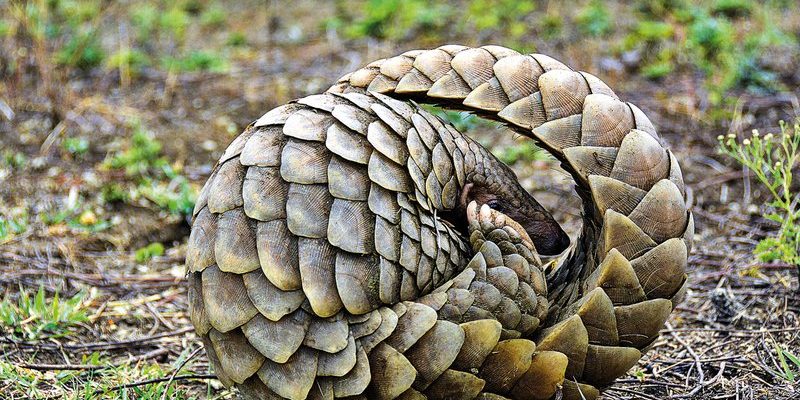![Comparing The Indian Pangolin Vs. [Similar Species]](https://gudri.com/wp-content/uploads/2025/06/Comparing_The_Indian_Pangolin_Vs___Similar_Species__image_0.jpg)
Today, we’re diving into a comparison of two types: the Indian pangolin and the Sunda pangolin. Both are part of the same family but live in different parts of the world and have their own unique traits. As we explore these two, you might start to see why they’re often considered nature’s little heroes in their ecosystems.
What Are Pangolins?
Pangolins are unique mammals known for their scales, which are made of keratin—the same stuff our hair and nails are made of. There are eight species of pangolins spread across Asia and Africa. These animals have a distinctive appearance, with elongated snouts and a tongue that can be longer than their body! They primarily eat ants and termites, using their strong claws to dig into mounds or trees.
It’s interesting to think about how pangolins navigate the world. They have a highly developed sense of smell, which helps them sniff out food. When threatened, a pangolin can curl up into a ball, using its tough scales as armor—much like a living rock! But sadly, their popularity in traditional medicine and as a delicacy has made them one of the most trafficked mammals on the planet.
Where Do The Indian and Sunda Pangolins Live?
The Indian pangolin (Manis crassicaudata) is primarily found in the Indian subcontinent, including countries like India, Bangladesh, and Nepal. It inhabits various environments, from forests to grasslands. They thrive in warm climates and are often spotted in agricultural fields where ants and termites are abundant.
On the other hand, the Sunda pangolin (Manis javanica) is more common in Southeast Asia, found in countries like Malaysia, Indonesia, and Thailand. They prefer tropical rainforests and are often seen climbing trees in search of food. The Sunda pangolin is known for being more arboreal compared to its Indian counterpart, which tends to stay closer to the ground.
Interestingly, the geographical differences also influence their behavior and lifestyle, which adds another layer to their comparison.
Physical Differences
When it comes to appearance, the Indian and Sunda pangolins have some noticeable differences. The Indian pangolin is slightly larger and heavier than the Sunda variety. Adult Indian pangolins can weigh up to 16 kg (around 35 lbs), while Sunda pangolins usually top out around 13 kg (about 29 lbs).
Their scales also vary: Indian pangolins have more prominent scales that are less tightly packed, giving them a bulkier appearance. Sunda pangolins, in contrast, have smaller, more closely spaced scales that create a smoother look.
Both species have long tails, and while the Indian pangolin uses its tail for balance on the ground, the Sunda pangolin uses its tail for agility as it climbs trees. Just think of the Indian pangolin as a sturdy lumberjack and the Sunda pangolin as a graceful gymnast!
Feeding Habits
Both the Indian and Sunda pangolins share a diet primarily consisting of ants and termites, but they have different hunting methods that are adapted to their environments.
The Indian pangolin often digs into termite mounds or ant hills using its powerful claws, relying on its excellent sense of smell to locate food. It can consume a staggering amount of insects—up to 70 million a year!
In contrast, the Sunda pangolin uses its long, sticky tongue to grasp insects. This tongue can extend up to 16 inches, which helps it reach into narrow spaces in trees. The Sunda pangolin is also known for its clever ability to climb and forage high up in trees, maximizing its access to food sources.
You might be wondering how they manage to do this without teeth. The answer lies in their specialized stomachs, which grind up the insects. They also consume small stones to help with digestion, making them truly unique eaters.
Conservation Status
Both the Indian and Sunda pangolins are classified as vulnerable by the International Union for Conservation of Nature (IUCN). Their populations are declining rapidly due to habitat loss and poaching. The Sunda pangolin, in particular, is under extreme threat because it’s sought after for meat and traditional medicine.
Many organizations are working hard to protect these incredible creatures. Conservation efforts include habitat restoration and anti-poaching initiatives. The global awareness surrounding pangolins is slowly growing, which is crucial for their survival. It’s a classic case of people needing to recognize how precious these little guys are.
Similarities in Behavior
Despite the differences in their habitats and physical traits, the Indian and Sunda pangolins display many similar behaviors. For instance, both species are primarily nocturnal, meaning they are most active at night. This helps them avoid predators and conserve water during the hotter parts of the day.
Another interesting behavior is their social habits. While pangolins are generally solitary animals, they have been observed occasionally interacting with others during mating season. They communicate through various vocalizations, including low grunts and squeaks, which can be quite charming to hear if you ever happen upon them in the wild.
Their digging abilities also highlight their similarity. Both species are fantastic diggers, which helps them create burrows for shelter and safety from predators.
Final Thoughts
So, what’s the takeaway when comparing the Indian pangolin to the Sunda pangolin? Both are truly remarkable animals, each adapted beautifully to their unique environments. They might look slightly different and have their own habits, but at the end of the day, they face similar threats and need our help.
As you think about these amazing creatures, remember that every little action counts. Whether it’s supporting conservation efforts or simply spreading awareness, we can all play a part in protecting these unique mammals. Pangolins are not just fascinating; they’re essential to our ecosystems, and understanding them helps us appreciate the diversity of life on our planet.

